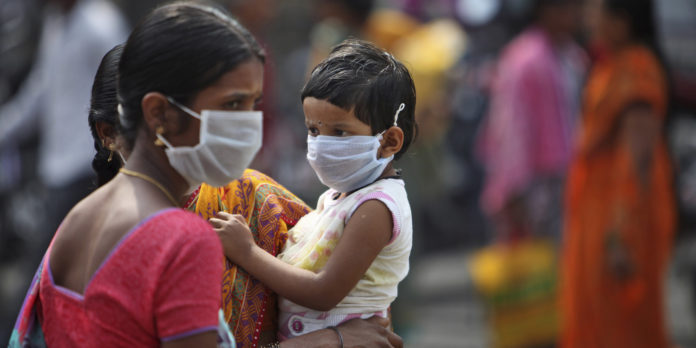
The death toll in India’s latest swine flu outbreak has risen to 1,731, out of nearly 30,000 people stricken with the virus, health officials said Monday, with 21 new deaths reported in the past day alone. Health officials blamed lower temperatures and rains, unexpected during this time of year, for the spike in cases, according to a local news site.
Officials said such an outbreak would usually subside around this time of year as temperatures warm, but nearly 1,000 new cases have been reported so far in March as the total number of cases surpassed the record set by India’s 2009 swine flu outbreak.
Cases of and deaths from the swine flu have been recorded all over the country in this most recent outbreak. In the western state of Gujarat, at least 387 people have died, out of more than 6,100 cases. In Rajasthan, in the northwest, 378 people have died. In other Indian states, deaths number in the hundreds and cases in the thousands.
Isolation wards in health centers would ordinarily be closed in April, but health officials expect they will now be kept open until cases of swine flu began receding, a local news site said. Various states have enacted public health measures such as free face masks or even free treatment for those with swine flu. In February, one city banned public gatherings in order to reduce the spread of the virus, even as the state’s health minister declined to declare the outbreak an epidemic.
The swine flu, or H1N1 virus, first surfaced in 2009 and is thought to have originated in pigs. A subsequent outbreak was declared a global pandemic by the World Health Organization and did not end until August 2010. The symptoms of swine flu are similar to those of other types of flu, such as a fever, sore throat or aches throughout the body.
Scientists at the Massachusetts Institute of Technology announced Wednesday that the current strain of the virus had mutated to become more dangerous than the kind that caused previous outbreaks, including the 2009 epidemic, which killed more than 2,700 people in India. But the Indian health ministry disputed the MIT findings, maintaining that the virus has not become more aggressive.
“The virus has not undergone any major mutation so as to make it more virulent,” the health ministry said recently in a statement to a local news site.
Some experts have also raised concerns that the virus is acquiring resistance to oseltamivir (brand name Tamiflu), the main drug used to treat H1N1. According to the Centers for Disease Control and Prevention, sporadic cases of oseltamivir-resistant H1N1 have been reported, and limited transmission of the drug-resistant strain was observed during the 2009 pandemic.
